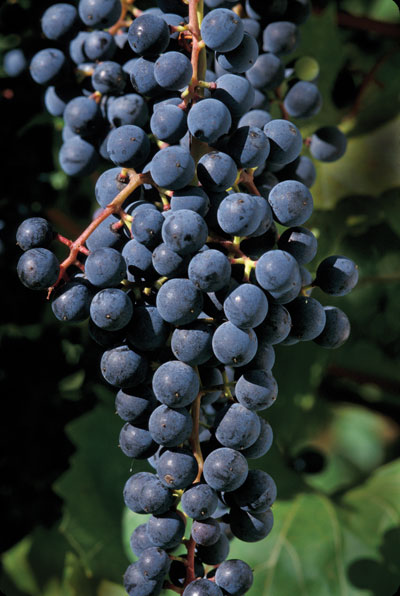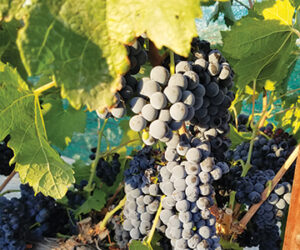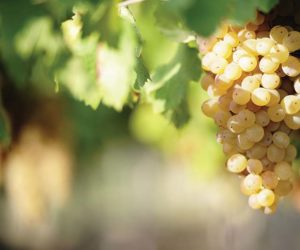Recently in the WineMaker Harvest Online Boot Camp, I discussed at length about harvest wine style and technique decisions. This topic had me deep in thought about how best to convey that information to our diverse audience around the globe. The challenge with presenting a topic like that, as well as writing about varieties that have regional importance rather than global prestige, centers on the specific variety, potential, or actual harvest parameters. We all should understand that the best wines come from a variety grown on the right site, whether it is a hybrid or pure Vitis vinifera. Pure vinifera has its place in the temperate zones of the Northern and Southern Hemispheres. But it is the fringe areas, perhaps too wet, too hot, or too cold, that grape breeders have focused on developing varieties that will thrive there. In their minds they are looking for traits to overcome the environmental adversity the new vine will experience. But they also need to ask the question: Is it going to make a good wine? And to what style of wine makes the variety shine. Frontenac is our focus in this issue because of its versatility on the winemaking front.

Also known as MN1047, this University of Minnesota hybrid was originally bred in 1978. It is a hybrid of Landot Noir and Vitis riparia #89 (MN89). In its lineage are also percentages of V. labrusca, V. vinifera, V. aestivalis, V. lincecumii, V. rupestris, V. cinerea, and V. berlandieri. With an abundance of native-American varieties, it is not surprising that it possesses good all-around disease resistance, except for foliar phylloxera, to which it is highly susceptible. A color mutation appeared in 1992, which was released in 2003 under the name Frontenac Gris. Another color mutation appeared in a vineyard in Québec in 2005, which was named Frontenac Blanc. All three varieties are productive, vigorous, cold-hardy, with loose bunches of small- to medium-sized berries capable of high sugar and acidity levels. It buds early in the season making it prone to frost damage. It ripens mid to late season.
Frontenac is a regional grape. It is widely grown across the Upper Midwest of the U.S. with some vineyards reported as far west as Nevada. I am personally involved in a project in northern Utah where it is planted with other cold-hardy hybrids. I am excited to be working on this as there is no better way to learn about a grape than to cut your teeth with it. Frontenac is made in a variety of styles, such as sweet or dry rosés, dry red, and Port-style wines. Frontenac Gris is made into dry white styles, and Frontenac Blanc, with the best styles reported to be dessert or Port-style wines to take advantage of its high acidity. Also understand that this is not the gospel, as many styles are possible.
As we went over in the Harvest Boot Camp, picking your style depends on the following harvest parameters: The overall condition of the fruit, sugar, acidity, pH, and tannin. I have always said that a great winemaking effort is the result of some great fruit, coming from a great vineyard, and tended by a great person. That said, the zones that these varieties are bred for actually have real weather. While they can be fairly immune to diseases, there are the physical dangers of late-spring frost, extreme heat, severe storms with hail, and then, early winter. Hopefully that great person can make the best and deliver fruit that the winemaker can make visual assessments and react accordingly when the fruit is delivered. Rot or poor-quality fruit needs to be sorted out. Recent research has shown as the percentage of rot increases in a specific maceration, its characteristics in the wine change. Some might not perceive this, others will. A very good resource for growing grapes in cold climates is Growing Grapes in Minnesota, 10th Ed., by the Minnesota Grape Association.
I have seen where some wineries in Michigan are experimenting with “flash détente.” A process in which the must is heated to 175–185 °F (80–85 °C) and then moved to a vacuum chamber where the cells burst, releasing all of their contents. The heat will kill off unwanted molds, denature deleterious enzymes, and improve and stabilize color. We will be working with flash détente on the Utah project, and I am excited as it has been a process used in Europe for some time now. The practice is certainly not practical for the home winemaker, but it stresses the importance of taking care of your fruit when it comes in. In the absence of sophisticated methods, the home winemaker needs to be diligent about sorting out bad fruit and understanding the relationship between pH, acidity, and sulfur dioxide (SO2).
Second to fruit quality when choosing the style are the remaining four parameters: Sugar, acidity, pH, and tannin. There has not been a lot of tannin research with Frontenac and one study I read fell short of recommendations for making wine. They worked with berry chemistry, which showed tannins are generally low with similar, and statistically insignificant, differences between two vineyards — one in Iowa and the other in South Dakota. Tannin levels in St. Croix and Marquette were also included with similar results. Thus, the variable here are the two climates. So, for maximum extraction for the home winemaker, getting some good heat in the fermentation (80–85 °F/27–29 °C), and a longer maceration, would be the first place I would start.
Frontenac is made in a variety of styles, such as sweet or dry rosés, dry red, and Port-style wines.
Sugar, acidity, and pH take us back to the vineyard where the local weather influences photosynthesis. As we learned in grade school, sunlight is needed for photosynthesis, the process of sequestering atmospheric carbon dioxide and converting it to sugar to be translocated to the berry. Frontenac can attain upwards of 24–25 °Brix if left hanging long enough. In California, we see dangerous rises in pH and significant decreases in acidity with varieties we select for a longer hangtime in our agriculture climate. This is not the case for Frontenac grapes. The high acid levels benefit from the increased hangtime. Malic acid is being respired by the berries, thus a decrease in overall acidity, with no effects on pH reported. Moving to the wine phase, natural deacidification can be achieved via a malolactic fermentation (MLF). Careful attention to taste and lab results factor in better-informed decisions on style type. This is an important aspect of my approaches in winemaking, even commercially, to sometimes see what I have rather than telling the wine where to go.
To do this, you have to understand the following relationship: sweetness ↔ acidity + astringency/bitterness
This is a general relationship that can be used with all wines (and foods). It says that the perception of sweetness is related to the sum total of acidity and the astringency/bitterness component. In the case of Frontenac, the low tannins put more emphasis on the acidity component to balance the sugar, and vice versa. If I see high acidity I want to sweeten the wine by possibly fortifying with ethanol before the end of fermentation to stop it, or backsweeten if I missed the earlier opportunity to fortify. While I like wines with crisp acidity, it sometimes has to be tamed. Lower acidity can work with higher sugars but consider fortifying after the fact. The possibilities are endless and it takes knowledge and experience to get the balances right. It may not happen your first time around, but over time you will get a feel for it. Keep in mind my general philosophy of working with what I have, not what I want. Sort of a minimalist and more importantly, opportunistic approach to quality winemaking.
Wines of the red version exhibit flavors of cherry, black currant, and plum. Some will perceive chocolate as the wines age. The Gris version features peaches, apricot, and citrus, but the wines will show some coloration. Some say the Gris will be replaced by the Blanc version and made into white Port-style or dessert style wines, with no coloration.
No matter the style you desire to make you have a lot of opportunities with Frontenac. My advice to prospective Frontenac winemakers is to have a plan but be sure to keep an open mind to moving outside the bubble and experimenting when the grapes throw you a curveball. I have always said that life is not always the destination, but the journey. This is so true with Frontenac, as you choose your style type. Mix and match, you will find your batch.
Dry Red-Style Frontenac
Ingredients
125 lbs. (57 kg) Frontenac fruit
Distilled water
10% potassium metabisulfite (KMBS) solution. (Weigh 10 grams of KMBS, dissolve into about 50 milliliters (mL) of distilled water. When completely dissolved, make up to 100 mL total with distilled water.)
5 g Lalvin D254 yeast (Premier Cuvée can be used as a substitute)
5 g Diammonium phosphate (DAP)
5 g Go-Ferm
5 g Fermaid K (or equivalent yeast nutrient)
Malolactic fermentation starter culture (CHR Hansen or equivalent)
Equipment
15-gallon (57-L) food-grade plastic bucket for fermentation
5-gallon (19-L) carboy
1–2 one-gallon (3.8-L) jugs
Racking hoses
Destemmer/crusher
Wine press
Inert gas (nitrogen, argon, or carbon dioxide)
Ability to maintain a fermentation temperature of 81–85 °F (27–29 °C)
Thermometer capable of measuring between 40–110 °F (4–43 °C) in one degree increments.
Pipettes with the ability to add in increments of 1 mL
Step by Step
- Clean and sanitize all your winemaking tools, supplies and equipment.
- Examine your fruit and remove and poorly colored clusters and clusters showing signs of rot.
- Crush and destem the grapes. Transfer the must to your fermenter.
- During the transfer, add 15 mL of 10% KMBS solution. This addition is the equivalent of 50 ppm SO2.
- Take a sample to test for Brix, acidity, and pH. Keep the results handy.
- Layer the headspace with inert gas and keep covered. Keep in a cool place overnight.
- The next day, sprinkle the Fermaid K directly to the must and mix well.
- Prepare yeast. Heat about 50 mL distilled water to 108 °F (42 °C). Mix the Go-Ferm into the water to make a suspension. Take the temperature. Pitch the yeast when the suspension is 104 °F (40 °C). Sprinkle the yeast on the surface and gently mix so that no clumps exist. Let sit for 15 minutes undisturbed. Measure the temperature of the yeast suspension and the must. You do not want to add the yeast to your cool juice if the variance in temperature exceeds 15 °F (8 °C). To avoid temperature shock, you should acclimate your yeast by taking about 10 mL of the must juice and add it to the yeast suspension. Wait 15 minutes and measure the temperature again. Do this until you are within the specified temperature range.
- When the yeast is ready, add it to the top of the must. Do not mix it in yet.
- You should see signs of fermentation within one to two days. This will appear as some foaming on the must surface, and it will appear that the berries are rising out of the medium. You need have on hand the ability to push the grapes back into the juice to promote color and tannin extraction.
- Monitor the Brix and temperature twice daily during peak fermentation (21 down to 10 °Brix). Morning and evenings are best and more often if the temperature shows any indication of exceeding 85 °F (30 °C), in which case you would activate your cooling system. Mix the must. Wait 15 minutes, mix and check the temperature again. Do this as often as it takes to keep the temperature between 80–85 °F (27–29 °C). Do not cool off to less than 80 °F (27 °C), heat it if necessary.
- At about 19 °Brix, dissolve the DAP in a little water and mix in.
- When the Brix reaches zero (about 6–10 days), transfer the must to your press and press the cake dry. Keep the free run wine separate from the press portion for now.
- Transfer the wine to your carboys and jugs. Your press fraction may only be a gallon or two (4–8 L). Make sure you do not have any headspace. Place an airlock on the vessel(s). The fermentation may perk up a little here as the primary fermentation completes. When activity starts to slow, taste the wine for sweetness or send a sample to an outside lab. The wine is considered dry if the residual sugar is less than 2 g/L.
- Inoculate with your malolactic (ML) bacteria. Cover the tops with an airlock to allow CO2 to escape.
- Monitor the ML fermentation using a thin layer chromatography assay available from most home winemaking supply stores.
- When the ML is complete, add 2 mL of fresh KMBS (10%) solution per gallon (3.8 L) of wine. This is the equivalent to ~40 ppm addition.
- Measure the pH and titratable acidity. Most importantly you want a finished TA of about 6.5-7.5 g/L. If the ML has not reduced the acidity to this range, consider setting up a deacidification bench trial using potassium carbonate (K2CO3).
- Place the wine in a cool place to settle. After two weeks, test for SO2, adjust the SO2 as necessary to attain 0.8 ppm molecular SO2. (There is a simple SO2 calculator at www.winemakermag.com/sulfitecalculator). Check the SO2 in another two weeks and adjust. Once the free SO2 is adjusted, maintain at this level. You’ll just need to check every two months or so, and before racking.
- Rack the wine clean twice over 6–8 months to clarify. Consider during this period using some oak chips to add some oak flavors, but do not expose the wine too long to the oak. The amount of oak to add is your preference. Consider the amount, contact time is based on the amount used. One to two weeks, sometimes less, is sufficient for this volume. Taste frequently to your preference of extraction.
- Once the wine is cleared, it is time to move it to the bottle. This should be about eight months after the completion of fermentation.
- Make the project fun by having a blending party to integrate the press fraction back into the free run. You may not need it all, use your judgment and make what you like.
- If all has gone well to this point, given the quantity made, it can probably be bottled without filtration. That said, maintain sanitary conditions while bottling. Once bottled, you’ll need to periodically check your work by opening a bottle to enjoy with friends.






